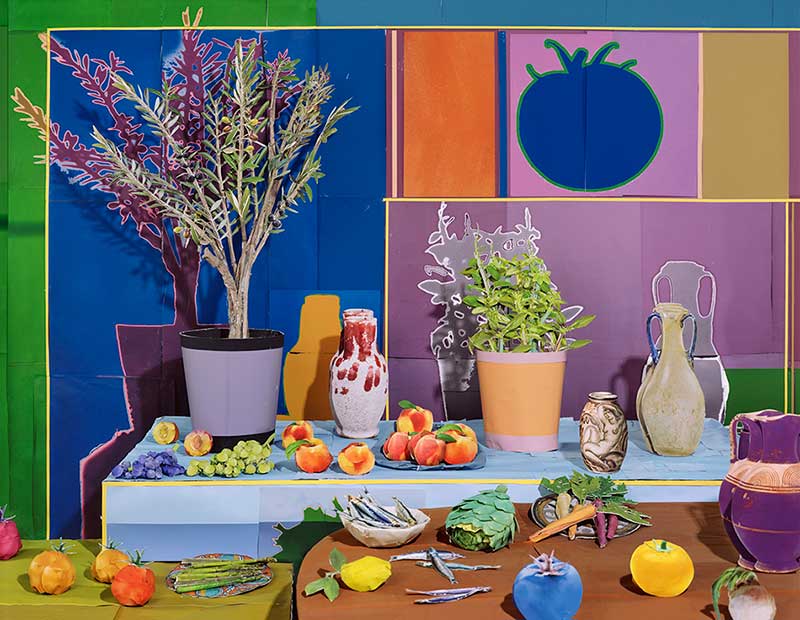Daniel Gordon’s elaborately composed tableaux are enticingly real, yet simultaneously inauthentic. Indeed, they exist as physical photographs – something one can look at, even touch. However, the colourful scenes Gordon assembles are formed from snippets of images plucked from a multitude of different places and times. Firstly, Gordon carefully constructs three-dimensional sculptures formed from collages of printed digital imagery (found in magazines or on the internet). He then photographs these creations with a 4×5 view camera. This process elucidates Gordon’s playful knack at warping the very concept of time. An infinitude of individual moments exist within his photographs, brought together to create one single imagined reality.
It is unsurprising that Gordon cites Henri Matisse as a strong artistic influence on his work. Upon reaching old age and illness, Matisse reverted to collage as a medium, slicing and arranging large colourful shapes into arresting compositions. Within the cutout, Matisse truly found his true expression, going on to create iconic works such as Blue Nude (1952) and The Snail (1952-53). Favouring Matisse’s spontaneous, dynamic technique, Gordon explains that he is ‘interested in showing [his] hand and letting people see the imperfection”.
Perhaps the leafy plant in Sicilian Still Life (2018) was found on Instagram, the elegant vase hastily cut from the back pages of Architectural Digest. Regardless, these objects are now divorced from their original functions, adopting new meanings as the protagonists of Gordon’s vibrant still life. Offering an explanation to his practice, Gordon recalls watching a woman step on a pile of baby birds, only to realise the injured creatures were in fact just a mass of shredded cardboard discarded on the street. The artist aims to replicate this sensation, presenting something that is not as it first appears. Thus, his compositions are painstakingly sewn together, creating a quilt of disparate, fleeting moments
(By Eleanor Lerman)
